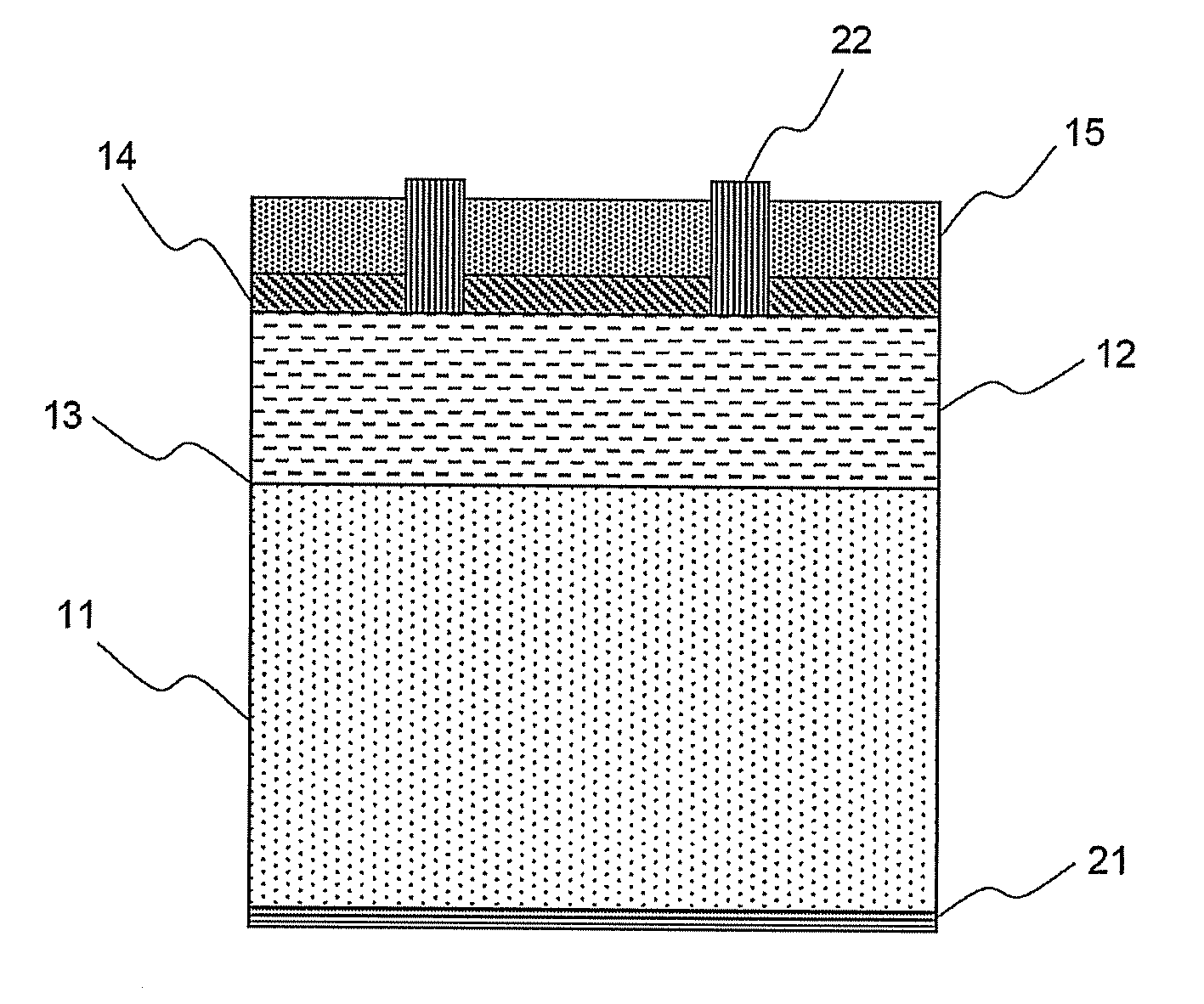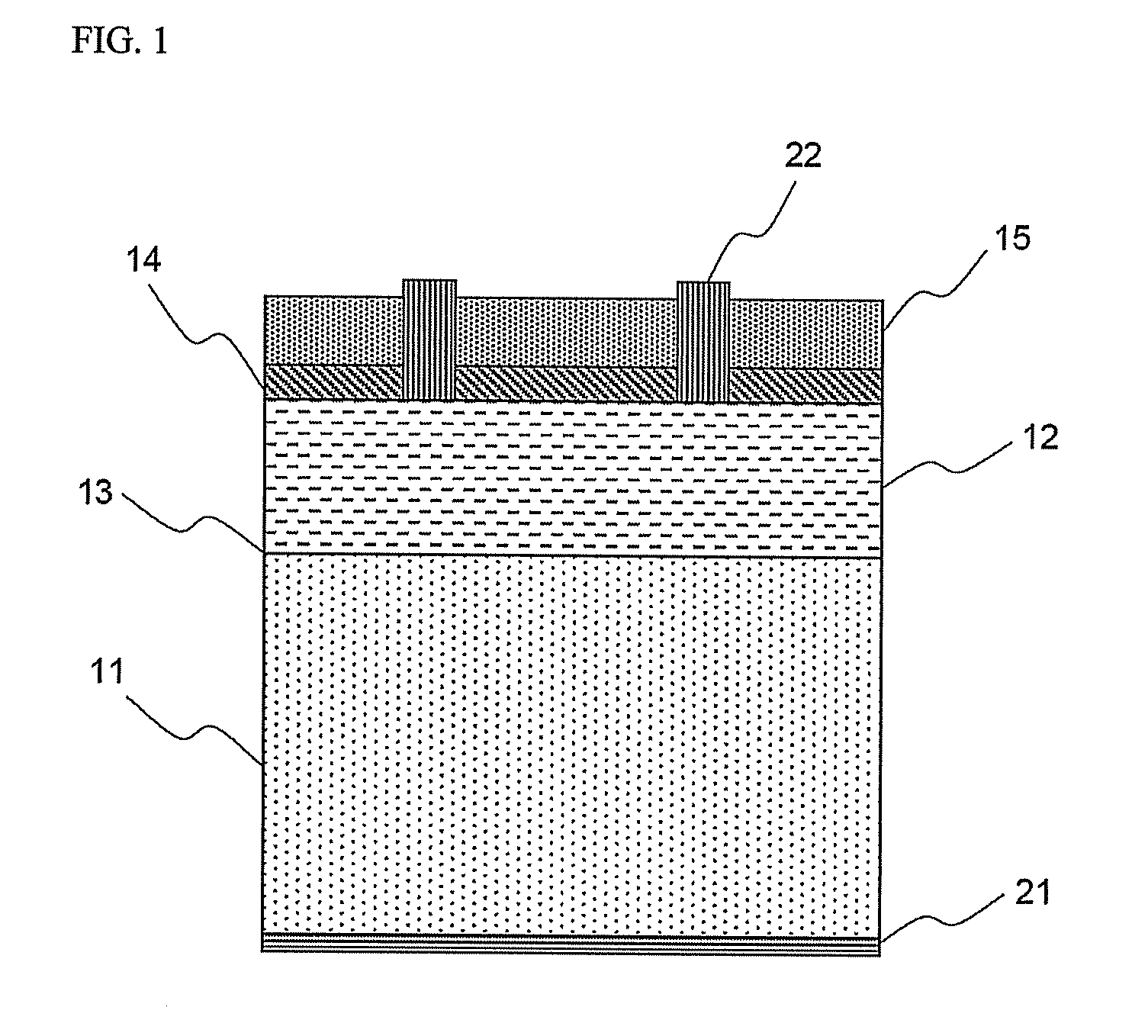Solar cell of high efficiency and process for preparation of the same
a solar cell and high efficiency technology, applied in the field of high-efficiency solar cells, can solve the problems of increased production costs, difficult to obtain the desired degree of anti-reflection efficiency, and need of expensive equipment such as laser equipment, so as to reduce the reflectivity of absorbed light, improve photoelectric conversion efficiency, and prevent the effect of carrier recombination
- Summary
- Abstract
- Description
- Claims
- Application Information
AI Technical Summary
Benefits of technology
Problems solved by technology
Method used
Image
Examples
example 1
[0036] A phosphorus-doped n-type emitter layer was formed on a boron-doped p-type silicon substrate to result in a p-n junction. Silicon oxynitride (SiOxNy) as a passivation layer was deposited to a thickness of 30 nm on the n-type emitter layer, by a PECVD method. Then, silicon nitride (SiNx) having a refractive index of 1.9 as an anti-reflective layer was deposited on the silicon oxynitride passivation layer, by a PECVD method. Next, an Al-containing paste is screen-printed on the p-type silicon substrate and an Ag-containing paste is screen-printed on the silicon nitride layer, thereby forming a pattern. The resulting structure was baked at a temperature of around 800° C. for about 30 sec to simultaneously form a rear electrode connected to the p-type silicon substrate and a front electrode connected to the n-type emitter layer, thereby fabricating a solar cell.
experimental example 1
[0039] In order to measure an efficiency of solar cells fabricated in Example 1 and Comparative Examples 1 and 2, open-circuit voltage (Voc) and short-circuit current (Jsc) were respectively measured. Then, based on the thus-measured Voc and Jsc values, a fill factor (FF) and the solar cell efficiency were measured. The results thus obtained are set forth in Table 1. Herein, the fill factor (FF) is defined as (Vmp×Jmp) / (Voc×Jsc), where Jmp and Vmp represent the current density and voltage at the maximum power point. The solar cell efficiency is given as Pmax / Pin, where Pmax represents the maximum power generated by the cell and the power input, Pin, into the system is defined to be the incident light intensity, i.e., the light energy supplied to the system per unit time.
TABLE 1Composition ofEfficiencyExample No.reflective filmJsc (mA)Voc (V)FF (%)(%)Ex. 1SiOxNy / SiNx32.70.62079.016.01Comp. Ex. 1SiO2 / SiNx32.70.61678.815.87Comp. Ex. 2SiNx32.40.61878.515.71
[0040] As can be seen from t...
PUM
 Login to View More
Login to View More Abstract
Description
Claims
Application Information
 Login to View More
Login to View More - R&D
- Intellectual Property
- Life Sciences
- Materials
- Tech Scout
- Unparalleled Data Quality
- Higher Quality Content
- 60% Fewer Hallucinations
Browse by: Latest US Patents, China's latest patents, Technical Efficacy Thesaurus, Application Domain, Technology Topic, Popular Technical Reports.
© 2025 PatSnap. All rights reserved.Legal|Privacy policy|Modern Slavery Act Transparency Statement|Sitemap|About US| Contact US: help@patsnap.com


